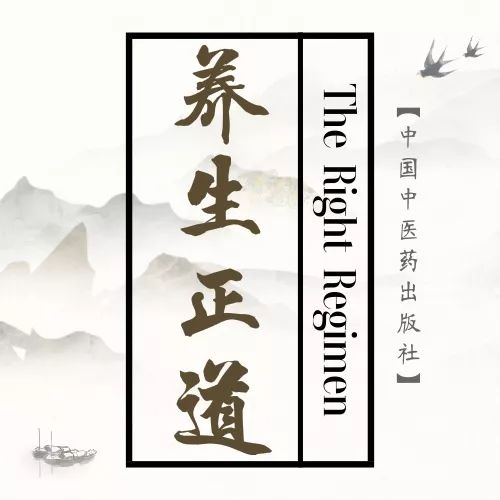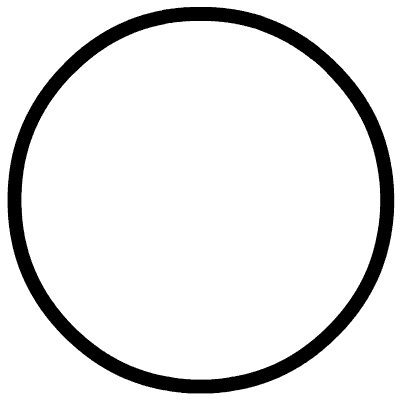↑ Click the above 【Health Preservation Path】 to follow us ↑
Abstract:
In Traditional Chinese Medicine (TCM), diagnosis involves the four methods of observation, listening, inquiry, and palpation. The method of listening includes both auditory and olfactory assessments, utilizing sound and the various odors emitted by the patient’s body to infer the nature of the disease.
//////////
A Story About Listening DiagnosisAuthor: Xiong Jibai
Interviewer: Please tell us more about TCM diagnostics.
Xiong Jibai: Alright, let’s discuss TCM diagnostic methods. How does TCM diagnose diseases? The principle can be summarized in one phrase—“What is within must manifest outside.” This means that by observing the functions of the organs, we can determine the physiological dysfunctions of the body. Regardless of which system is dysfunctional, there will be external manifestations, and when the body is abnormal, it indicates a pathological state. The physiological abnormalities are due to issues within the internal systems. The external symptoms reflect the internal dysfunction, which is referred to as “What is within must manifest outside.”
When there is a normal physiological system, there will be normal physiological manifestations; when there is dysfunction in the physiological system, there will be external signs of dysfunction. Therefore, we can “infer the internal from the external,” which is the principle and basis of TCM diagnosis, as stated in the Huangdi Neijing (Inner Canon of Huangdi): “Observe the external manifestations to understand the internal organs, thus knowing the disease.”

In Chinese history, the earliest famous physician, Bian Que, was said to be able to diagnose patients through walls. This is a myth, meant to illustrate his exceptional observational and analytical skills. Thus, a skilled TCM practitioner is highly sensitive in diagnosis. What is the foundation of this sensitivity? It is a thorough understanding of the human physiological system. If you are not well-acquainted with the knowledge of organ functions, you will not be able to recognize the external manifestations of the body and connect them to find the underlying issues.
It is like a car suddenly stalling on the road; a typical driver may not know where the problem lies. However, a skilled driver can identify which screw is loose or where the issue is, and can fix it immediately. As a TCM practitioner, one must have the ability to quickly determine the problem from even the slightest abnormality in the patient’s presentation; this is the essence of inferring the internal from the external.
TCM diagnosis is comprehensive. We refer to the four methods: observation, listening, inquiry, and palpation, which are derived from the Huangdi Neijing and summarized in the Nanjing (Classic of Difficult Issues) as the four examinations. The Huangdi Neijing states: “Seeing the color reveals the disease, called Ming; feeling the pulse reveals the disease, called Shen; asking about the disease reveals its location, called Gong.” The Nanjing further states: “To know by observation is called Shen; to know by listening is called Sheng; to know by inquiry is called Gong; to know by palpation is called Qiao.”
The first method is observation, which includes examining the body shape, facial expression, complexion, and tongue color. Specialists in warm disease theory particularly emphasize tongue observation. Through observation, one can understand changes in the body. For example, a white coating on the tongue indicates exterior conditions, a thick white coating indicates dampness, a yellow coating indicates heat, a thick yellow coating indicates damp-heat, a black and dry coating indicates heat-toxicity, a black and moist coating indicates cold-dampness, a slippery coating indicates phlegm, a red tongue with little or no coating indicates yin deficiency, and a tongue with cracks indicates deficiency of essence and blood. A tongue with teeth marks indicates spleen qi deficiency; all of these are knowledge from TCM observation.
TCM listening diagnosis includes listening to sounds and breath sounds. For instance, whether the breathing is labored or if there is a cough can be discerned by ear. For example, whooping cough presents as paroxysmal coughing, while diphtheria presents with labored breathing and a barking cough, which can be identified through listening. If the breath is slow and labored, it indicates a deficiency type of dyspnea. In asthma, there will be wheezing sounds. Additionally, incoherent speech indicates delirium. There is also the phenomenon of “speaking softly and repeating oneself throughout the day,” which refers to speaking very softly and intermittently, indicating weakness of the vital energy.
Another aspect of listening diagnosis involves the sense of smell. For example, in liver disease, in my experience, when liver disease reaches a very severe stage, a unique liver odor emerges, which is indescribable. Whenever I detect that liver odor, I know the patient is in a dangerous condition.
For instance, I have heard a specific sound of hiccuping in patients who are nearing death, characterized by three distinct hiccups.
Let me share a story with you: During the early years (during the Cultural Revolution), on the second day of the Lunar New Year, I was bedridden due to a serious illness while heavy snow fell outside. A farmer came to my house before dawn, and I was unable to get out of bed, trembling and very ill. The farmer said his son was suffering from an acute condition, had been passing blood in his stool for two days, and after consulting many doctors at the hospital, no one could help. He insisted that I take a look.
After hearing his story, I got out of bed, leaning on a stick, and left without having breakfast. His home was about ten miles away, and it took me about two to three hours to arrive, still in the heavy snow. The boy’s name was Long Cheng, and I still remember it clearly; he was 18 years old. When I arrived at his home, I saw a pomelo tree outside the playground, and under the tree lay a raincoat used by the farmer, where the child was lying.

I said, “Long Cheng, why are you lying there? It’s cold outside!” He replied, “I’m sitting here to cool off.” This statement struck me as abnormal; it was snowing, yet he said he was cool sitting there, which gave me the first impression that this patient was very unusual.
So, I invited him inside. He came in and sat by the fire pit. At that time, rural fire pits were just earth pits used for heating. I sat down to rest, as I was already very tired from walking. After about ten minutes, I heard the patient let out a long, low hiccup.
I am very sensitive to this type of hiccup. How did I discern this special hiccup? Although it is recorded in books, if you have not seen it, you cannot recognize it immediately. Three years prior, a farmer was working in the mountains when it suddenly rained heavily, and everyone took shelter in a mud house. When the wind blew, the house collapsed, injuring seven or eight people. When we went to rescue them, we found that two had already died. I heard an elderly person let out a hiccup just before dying, which was the “death hiccup” described in the books, thus I gained this experience.
When Long Cheng sat there, I heard him let out a hiccup. My heart sank; this hiccup was not right! I immediately took his pulse and found a “fish soaring” pulse, intermittent and the same on both hands. I was concerned that I had not taken the pulse correctly because I had walked ten miles with an illness, panting and sweating, and had not eaten, only had a cup of tea. So, I decided to check again in a few minutes. Just as I was preparing to check his pulse again, he let out a second hiccup, and upon hearing it, my first instinct told me it was a death hiccup. I immediately confirmed it; when I checked the pulse again, it was still the “fish soaring” pulse on both hands.
I then asked him where he felt uncomfortable, and he said he felt fine except for discomfort in his neck, and that was all he could say. He had started passing blood in his stool on the 29th of the twelfth lunar month, continued on the 30th, and had not bled on the first day of the new year. By the second day, when I visited, he had not bled. I asked him about his symptoms at that time, and he only mentioned discomfort in his neck, which indicated a loss of spirit. Coupled with the “fish soaring” pulse and the hiccuping sound, the patient was actually in imminent danger.
I prescribed him a Du Shen Tang (Ginseng Decoction), which contained only Korean ginseng. I told his brother, “You must hurry to the hospital to get the medicine. It’s a ten-mile trip to the hospital, and if you can get the medicine back in time, give it to him immediately; if not, you can return it to the hospital.” At that time, a piece of Korean ginseng cost seven to eight yuan, which was a significant amount for a farmer, unlike today.
However, as the family was sending me out, the patient let out a third hiccup. I walked about half a mile from their home when the child died. This illustrates the importance of listening to sounds; this is the essence of listening diagnosis.

Recommended Reading
Chinese Application of TCM Plaster Therapy
The book is divided into four parts: the first part provides a macro overview of the development history, principles of action, application scope, characteristics, and modern research of plaster therapy. The second part introduces the functions of commonly used drugs in plaster therapy and the manufacturing and functions of different dosage forms. The third part discusses nearly 200 common diseases across various fields, including internal medicine, surgery, gynecology, pediatrics, dermatology, and otorhinolaryngology, organized by disease (using Western medical terminology primarily, while still applying TCM terminology where Western terms are difficult to find), detailing specific preparation methods, clinical operations, and precautions based on ancient texts. It also compiles ancient medical cases recorded in classical texts and modern clinical reports through CNKI literature searches. Additionally, Professor Tian Conghuo provides expert commentary on the treatment of each disease, aiming for a comprehensive, simple, practical, and efficient resource. The appendix introduces Professor Tian Conghuo’s life and achievements, as well as the operational standards for plaster therapy.

Health Preservation Path
Copyright Statement
This article is excerpted from A True Master of TCM: Interviews with Xiong Jibai on the Essence of TCM, authored by Xiong Jibai, published by China Traditional Chinese Medicine Press, copyright belongs to the relevant rights holders.All images are copyright images purchased by the publisher from the image network; please do not steal images.
For commercial cooperation or submissions: [email protected]
 Click “Read the Original” to purchase the book on the WeChat Youzan platform
Click “Read the Original” to purchase the book on the WeChat Youzan platform

